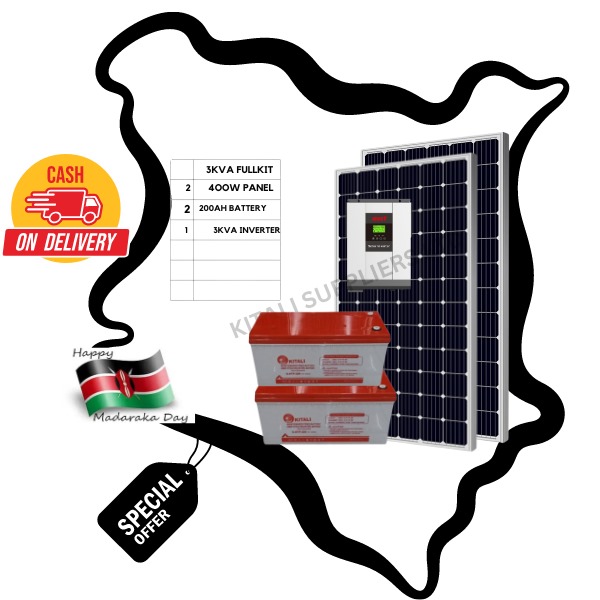Featured
50% off
Description
The 3kVA inverter serves as the cornerstone of the solar power system, acting as the interface between the photovoltaic (PV) array and the electrical appliances. This inverter's capacity implies a robust capability to convert DC electricity from the solar panels into AC electricity, suitable for powering household or commercial loads. It's imperative to verify compatibility not only with local voltage and frequency standards but also with the specific requirements of the connected devices. Moreover, assessing the inverter's efficiency ratings and surge power handling capacity ensures optimal performance and longevity of the system.
Moving on to the batteries, the choice of two 200Ah solar batteries underscores a strategic approach towards energy storage. These batteries, typically deep-cycle variants tailored for solar applications, are tasked with storing excess energy generated during periods of high sunlight for later use when solar input is insufficient. Here, factors such as battery chemistry (lead-acid, lithium-ion, etc.), cycle life, and temperature tolerance come into play. Additionally, integrating a battery management system (BMS) ensures proper charging, discharging, and overall health monitoring, enhancing the longevity and efficiency of the battery bank.
Considering the solar panels themselves, each 400W panel represents a substantial contribution to energy generation. However, the effectiveness of these panels hinges on various factors such as their orientation, tilt angle, shading, and overall system design. Optimizing these parameters maximizes sunlight capture throughout the day, thereby boosting energy yield. Moreover, assessing the panels' build quality, efficiency ratings, and degradation rates over time aids in selecting reliable and long-lasting components.
Beyond the core components, ancillary equipment such as the charge controller plays a pivotal role in regulating the flow of electricity between the solar panels and the batteries. Advanced features like maximum power point tracking (MPPT) enhance energy conversion efficiency, especially under varying weather conditions. Similarly, attention to detail regarding wiring, fusing, and grounding ensures electrical safety and system reliability.
In essence, this solar power setup embodies a holistic approach towards renewable energy utilization, blending technological sophistication with environmental consciousness. By carefully selecting and integrating each component, one can create a resilient and sustainable energy infrastructure capable of meeting diverse power needs while minimizing carbon footprint and reliance on conventional energy sources.

Positive Seller Ratings
100%
Ship on Time
96%
Seller Reviews
0
0
Average Rating
(0 Review)
To give a review, you need to login first.
LoginProduct Reviews
This product has no reviews.
Let others know what do you think and be the first to write a review.
Sold By
Makit Suppliers

Positive Seller Ratings
100%
Ship on Time
96%
Seller Reviews
0
More Products From Them


